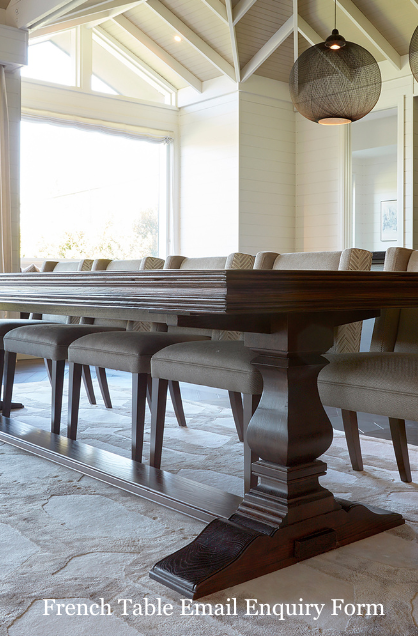What Is a French Refectory Table?
At first, a French refectory table might look like a plain wooden table. But it started in France a long time ago, in the 1600s, where monks used it to eat meals together quietly. It wasn’t just a table—it stood for sharing, routine, and strength. You can still feel those elements in its design today.
In this article, you’ll learn what makes the French refectory table special. We’ll talk about where it came from, what it looks like, and how people still use it today. Whether you like its simple style or want a strong French refectory table that lasts, this guide will help you understand it better.
What Is a French Refectory Table?
French table builders first made the refectory table in the 1600s for monks to use during meals in quiet, peaceful places called monasteries. The French refectory table was long and narrow, so many people could sit and eat together. The word “refectory” comes from a Latin word that means “to restore.” Monks believed mealtime helped their bodies and minds feel better. These French refectory tables were strong, simple, and made to last a long time.
Later, the refectory table moved out of the monasteries. People started using it in large homes and farmhouses all over France. Even though the places changed, the French refectory table stayed the same—useful, plain, and full of quiet charm.
Key Characteristics of a French Refectory Table
Here are the key characteristics of a French refectory table:
- Long, narrow proportions – Designed to accommodate multiple people comfortably, ideal for large gatherings or banquet-style dining
- Solid hardwood construction – Commonly crafted from oak, walnut, or other durable timbers known for their longevity
- Trestle-style base or stretcher support – A defining feature that provides structural integrity and visual balance
- Visible joinery and aged finish – In antique versions, you’ll often find handcrafted joints and a natural patina that reflects age and use
- Unembellished design – Focuses on form and function rather than ornate decoration, staying true to its monastic roots
- Low sheen or matte surface – Often left with a simple finish to highlight the grain and texture of the wood
Modern Uses and Styling Ideas for French Refectory Table
Today, people use the French refectory table in many different ways. Its big size and simple look help it fit into lots of rooms. In a dining room, it often becomes the main piece of furniture. It’s long enough for a big group and strong enough to stand out without being too obtrusive.
You can put different kinds of chairs around it—maybe soft ones on one side and wooden ones on the other. That mix makes the room look fun and interesting. In the kitchen, the French refectory table works well for everyday meals. With open shelves, pretty dishes, and cloth napkins around, it helps the space feel cozy and lived-in.
Some people even use this type of French table as a desk. Its large top is great for writing, drawing, or working on projects. Add a rug or a desk lamp, and it becomes a nice place to focus. The French refectory table makes the room feel calm and steady.
Conclusion
The French refectory table has a long story. French Table builders first made it hundreds of years ago for monks to eat meals together. Now, it’s found in all kinds of homes, from small country houses to city apartments.
You can use this type of French table for eating, cooking, or even working. It’s strong, simple, and never goes out of style. If you want to bring one into your home, check out the handmade French tables from luxury interior designer and furniture manufacturer Mark Alexander.



